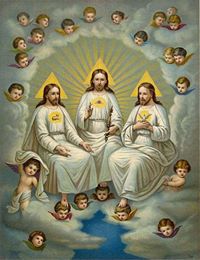What Latin term refers to a two wheeled car, drawn by four horses in chariot racing in classical antiquity?
A -quadriga- is a car or chariot drawn by four horses abreast and favoured for chariot racing in classical antiquity and the Roman Empire until approximately the late Middle Ages. The word derives from the Latin contraction of -quadriiuga-, from
-quadri- : four, and -iugum-: yoke or harnass.
The four-horse team harnass arrangement in -quadriga- is distinct from the more common four-in-hand array of two horses in the front and two horses in the back.
-Quadrigae- (plural) was raced in the ancient Olympic games and other contests and in ancient Roman chariot racing.
It is represented in profile as the chariot of gods and heroes on greek vases and in bas-relief. Also in statues of which the statue on top of the Brandenburg Gate in Berlin, Germany, is a good example of.
The statue depicts the goddess of victory, Victoria driving her chariot: the -quadrigae- were emblems of triumph; victory or fame often are depicted as the triumphant man/woman driving it.
In classical mythology, the -quadriga- is the chariot of the gods; Apollo was depicted driving his -quadriga- across the heavens, delivering daylight and dispersing the night.
The word -quadriga- may refer to the chariot alone, the team of four horses without it, or the combination of both.
More Info:
archaeology--travel-com.cdn.ampproject.org


